If you have been a Windows user for a long time, I am sure you must have used Command Prompt. Even today, the CMD helps in performing many advanced administrative functions, and in troubleshooting Windows-related issues. We have earlier, already covered some Basic Command Prompt Tips. Today we will see some a-bit-more-advanced CMD tricks for Windows 11/10.
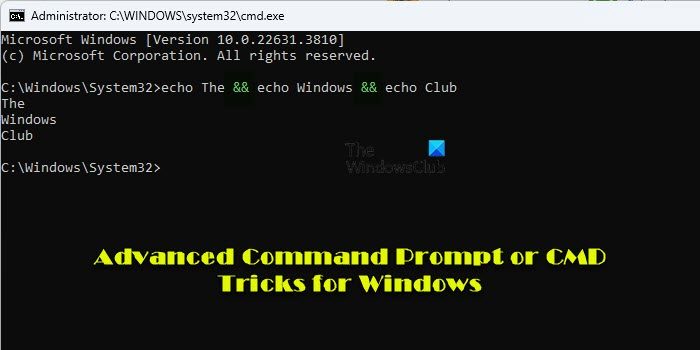
Command Prompt or CMD Tricks
1] Copying Error Commands to Clipboard Directly
Many times while performing an operation you get an error. So, you might feel the need for copying and pasting the error to the clipboard before reporting it to the concerned authorities via email or chatting. Well, with this trick you can easily store a command output to a clipboard.
To do this, launch Command Prompt and simply add the command | clip at the end of the command. For e.g. Dir /d | clip.
2] Finding your IP address, DNS Server address, and a lot more
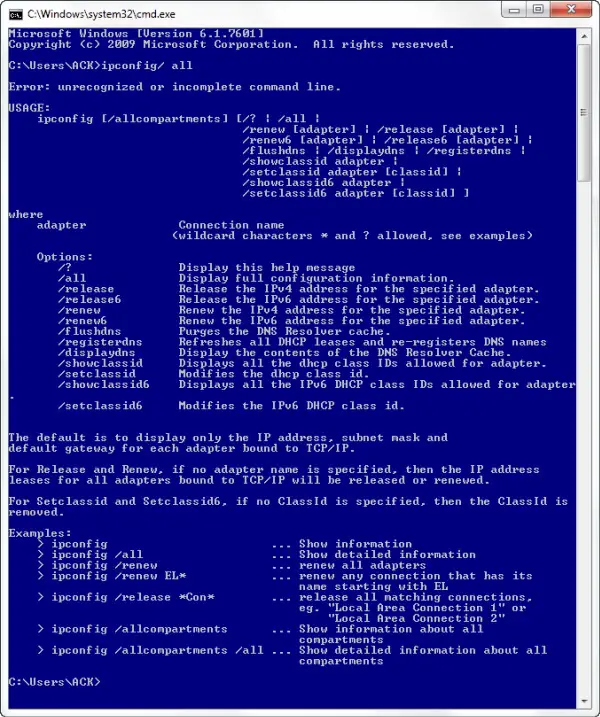
CMD lets you find out your IP address. To do this:
- Type ipconfig /all at the command prompt and press Enter.
- Once done, the command prompt will return you information on IP address and DNS servers along with information on your hostname, node type, primary DNS suffix, etc.
Also, CMD will let you know whether IP Routing, Wins Proxy, and DHCP are enabled or not.
3] Check if anyone is stealing your WiFi connection
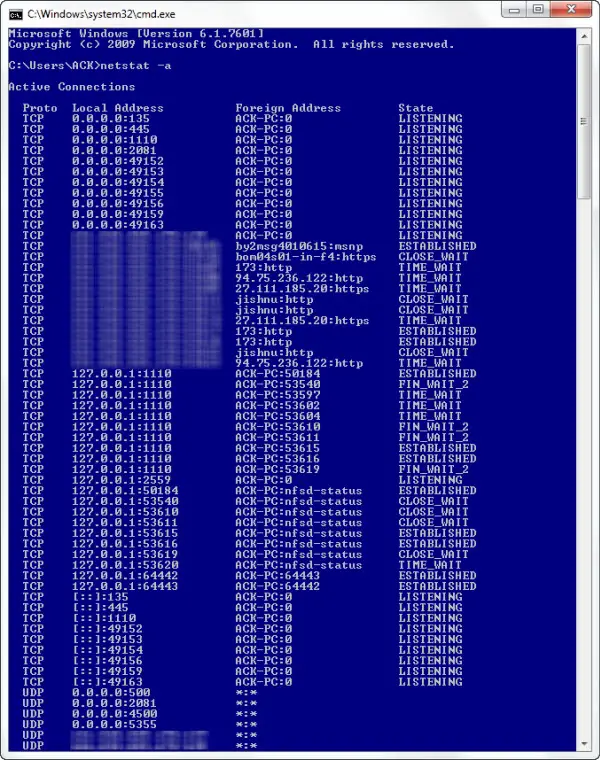
One highlight of the command prompt is that it can even let you know if someone is having unauthorized access to your Local Area Connection and using it. To check, follow these steps:
- Open your web browser and visit http://192.168.1.1 or http://192.168.0.1 or the default IP address for your broadband router.
- Search for the tab mentioning ‘Attached Devices’ or something similar.
- Then, find the computer name, IP address, and MAC Address or Physical Address or Hardware Address, of your computer. Use the above trick.
- Next, compare it with those displayed by your router in Step 2. If you notice some strange devices, then there is a possibility that your neighbor is sharing the internet connection without your consent. Set a password!
4] Know if someone is hacking your computer/Trace a Hacker
You can even know if someone is hacking your computer.
- Execute the netstat -a command and it will return you a list of computers that your computer is connected to.
- In the results returned, you will find the Proto column giving details on the type of data transmission taking place (TCP or UDP), Local address column giving information on the port with which your computer is connected to an external computer. In addition to this, you will also notice ‘State’ providing you information on the state of the connection (whether a connection is actually established, or waiting for transmission or is “Timed Out”).
- Thus, it will be easier for you to determine if someone you don’t know is actually connected to your computer or not.
5] Copy-Paste in Command Prompt
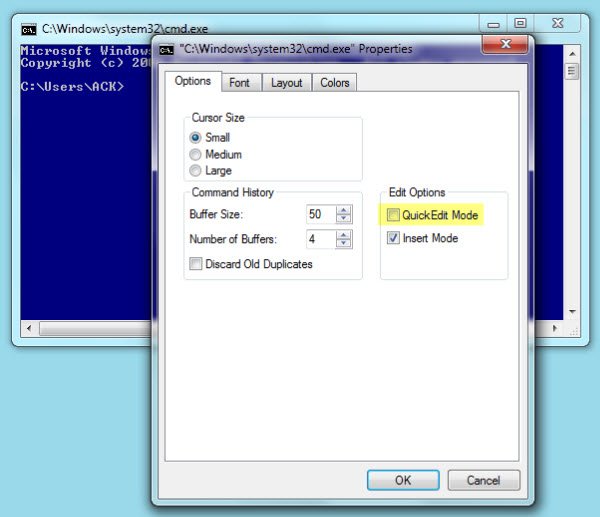
If you have been looking for a new method to copy-paste rather than the conventional one of using the option from the right-click context menu, try this!
- Right-click on the command Prompt title bar of the window and choose ‘Properties’
- Then, in the Properties window under the ‘Option’ table enable the ‘Quick Edit Mode’ option. That’s it!
- Now, you just need to select text string/strings by moving the cursor over it, press the ‘Enter’ key to copy the selected texts to Clipboard and do a left-click to paste it there.
6] Open the Command Prompt from Any Location
It can be really annoying to execute the cd/chdir command over and over again to get to the right directory you want to work from. With the trick mentioned below, you could open a Command Prompt window from any folder you’re viewing, in Windows. To do this:
- Open the folder in Windows Explorer and hold the Shift key while making a right-click on the folder.
- Then, select ‘Run command window here’ to open the CMD prompt.
- Click on the option and you’ll begin a new instance of the Command Prompt, ready and waiting at the right location!
7] Run multiple commands
You can run multiple commands by separating them with &&. This, however, is subjected to one condition!
- The command towards the left should be executed first
- Once it completes successfully then the second command can be made to run. If the first command fails, then the second command will not run.
8] Show folder structure
Use the following syntax to show the folder tree structure
Tree [drive:][path] [/F] [/A]
9] Drag and Drop files or folders in CMD window to enter path
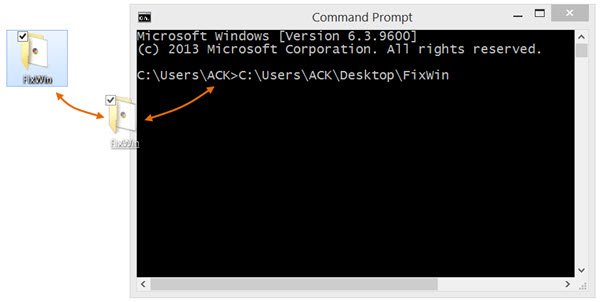
To get the full path of the file or folder auto-entered into your command prompt window, simply drag and drop the file or folder into the window. This will not work in an elevated CMD window.
Let us know if you have any other CMD tricks up your sleeve!
Read: How to open Command Prompt at Login screen or Boot in Windows.
How to improve PC performance with cmd?
To fix a slow PC using Command Prompt, you may execute a bunch of commands that manage system resources and settings. Launch Command Prompt with administrative privileges. In Command Prompt, run chkdsk C: /f /r /x to scan and repair disk errors. Replace ‘C:’ with the appropriate drive letter. Next run cleanmgr to clean up disk space. Run defrag C: /O to optimize disk performance. Replace ‘C:’ with the drive letter. Run tasklist and taskkill /F /IM <process_name> to manage running processes. Replace <process_name> with the name of the process to terminate.
How to make RAM faster using cmd?
RAM itself, as a hardware component, cannot be directly altered using CMD or any software means. However, you can optimize how RAM is utilized by closing unused applications and efficiently managing background processes. This helps in maximizing available RAM for active tasks, thereby improving overall system performance. Use tasklist and taskkill to manage processes that use excessive memory. Use msconfig to disable unnecessary startup programs and services that consume RAM. Use sysdm.cpl to disable visual effects through System Properties > Advanced > Settings (under Performance) > Adjust for best performance.
You might want to also check out these posts:
Don’t forget the F7 key for a list of your history and the tab key to move you through the File system faster.
If you want a REALLY powerfull command-prompt then use “Take Command”:
http://jpsoft.com/index.php
There is also a FREE version called “TCC/LE” in both 32 & and 64-bit versions.
The difference is that the free version doesn´t have all commands, but it´s still a LOT more powerfull than “CMD”….
It´s very well documented, so it´s no problem finding information about it´s internal functions & commands etc.
“Take Command” is the successor of 4DOS, the famous replacement for command.com in MS-DOS.
JP-Soft is a wellknown & respected company so it´s safe to use their software.
4DOS / Take Command is so powerfull that some people even consider it being a programming language.
I´ve been programing in 4DOS for years, and you can do a lot of amazing things with it…
Thanks for posting about these freeware. Should make some good new posts. ;)
Yes ofcourse; the F7 was mentioned in https://www.thewindowsclub.com/5-basic-command-prompt-tips-for-windows-7-vista-users
All CMD-commands works in Take Command/ TCC.
You just get a LOT of “extra” commands / functions.
So it´s no problem to use it instead of CMD….
It seems very interesting!
try this http://osconfig.blogspot.in/2012/11/cmd-tricks-copy-to-clipboard.html
Make a Virus that could eject your optical media continuously and automatically and also get to know more command prompt tricks @http://goo.gl/8JPGnl
Thanks for such good tut. is possible copy any files and paste it on USB drive or external drive?
umm the owner of this web thank you but pls help me, i was hacked by a hacker and it took all my files HELP PLEASEEEE!!!!!!!!!!
Contact Microsoft about this issue or an computer expert. These will help you.
I don’t understand the point about the “Finding your IP address, DNS Server address and a lot more” section. The command and the screenshot bare no relation to the purpose of the section!!!
The command is “ipconfig /all” & not “ipconfig/ all”. The screenshot actually shows an error and then correct usage of the command.
Who proof read this post???!
how do i start a chat using window 10?